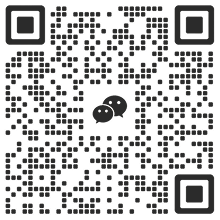Compiled by: Felix, PANews
On October 24, crypto exchange Kraken announced plans to launch the L2 network Ink on Ethereum in early 2025. The network will focus on DeFi, allowing token trading and lending without intermediaries. The Ink testnet will be launched later this year, and developers will be able to try out Ink's applications on the testnet. The Ink mainnet is expected to be open to retail and institutional users in the first quarter of next year.
Ink is built on Optimism's open source, MIT-licensed OP Stack codebase, joining the broader Ethereum ecosystem. In addition to benefiting from Ethereum's security, Ink will also become part of the OP Superchain. This unified blockchain network shares security, governance, and values, using a common standard codebase to help scale Ethereum.
It is worth mentioning that Ink founder Andrew Koller said in an interview that Kraken does not plan to issue its own tokens. In addition, Kraken has partnered with Optimism to release a limited edition NFT to thank early supporters.
There are currently about 40 people on the Kraken team working on Ink, and the company is already planning events for developers, including Devcon in Thailand in November.
After the chain was launched and gained benefits, various trading platforms followed suit
After seeing how blockchain helped drive Binance’s revenue and user growth, various crypto exchanges have launched their own blockchains. Binance’s BNB Chain and related tokens have become one of the most popular tokens. Coinbase’s foray into the space has also been successful, with Base’s transaction volume increasing 300% month-on-month in the second quarter, driven by the release of applications and memecoins. Recently, even decentralized exchange Uniswap announced the launch of its L2 network.
Related reading: What is different about Unichain, the L2 network launched by Uniswap?
Although DeFi applications have existed for years, they are considered too complicated for ordinary users. Kraken is trying to simplify the experience and make it cheaper and more intuitive to use DeFi to earn returns and achieve other functions. Ink founder Andrew Koller said that the Ink application will be available through the Kraken Wallet application.
“It’s an Apple-like experience that’s very easy to use,” he said. “Over time, our users will have both of these centralized and decentralized ecosystems. We want you to feel like you’re doing something familiar.”
Ink is expected to offer more than a dozen available DAPPs when it debuts, such as decentralized exchanges and aggregators. Kraken will initially serve as Ink's sorter, making money by organizing and managing transactions on the network, but the function will eventually be decentralized and shared by multiple parties. According to Coinbase's shareholder letter, Coinbase's Layer2 network Base had sorter revenue of $53 million in the second quarter.
Optimism becomes a hot commodity
Creating your own L2 network is nothing new. Other L2 networks like Polygon, zkSync, Starknet, and Arbitrum have launched their own stacks in the hopes that institutions will choose their technology.
However, Optimism has become very popular recently. Mainstream crypto companies and even non-crypto companies have chosen to use Optimism as the blueprint for their own networks. Companies that use Optimism code to develop rollups include Base, Sony, Uniswap, and World Network (formerly Worldcoin) supported by Sam Altman.
The Optimism chain accounts for almost half of Ethereum’s more than 100 rollup transactions. There are at least 43 rollups on L2 projects using Optimism technology, with a total TVL of $18.1 billion. They are called "Superchain" by the head of the Optimism project, while there are only 29 projects using Arbitrum technology.
While the proliferation of rollups has fragmented Ethereum’s liquidity, Optimism plans to launch a new token standard in 2025 to enable interoperability between blockchains using its code.
“Ink will support Superchain ERC20 at launch, enabling users to easily move around the Superchain ecosystem and laying the foundation for more seamless interactions between Ink and other OP Chains,” Kraken said in a statement.
Founded in 2011 and headquartered in San Francisco, Kraken is currently expanding into new product areas and markets and continues to consider the possibility of an initial public offering (IPO). Earlier this year, Kraken was considering raising a final round of financing before an IPO.
Like many cryptocurrency companies, Kraken's future may depend on whether U.S. crypto policy changes after the upcoming U.S. election. Last year, the U.S. SEC charged Kraken with operating an unregistered broker, dealer, exchange, and clearing agency. In February 2023, Kraken reached a separate settlement with the U.S. SEC regarding its staking business and agreed to pay $30 million in illegal gains, prejudgment interest, and civil penalties.
Related reading: Kraken is about to enter U.S. stock trading, and crypto platforms are seeking new solutions under regulation and bear market














